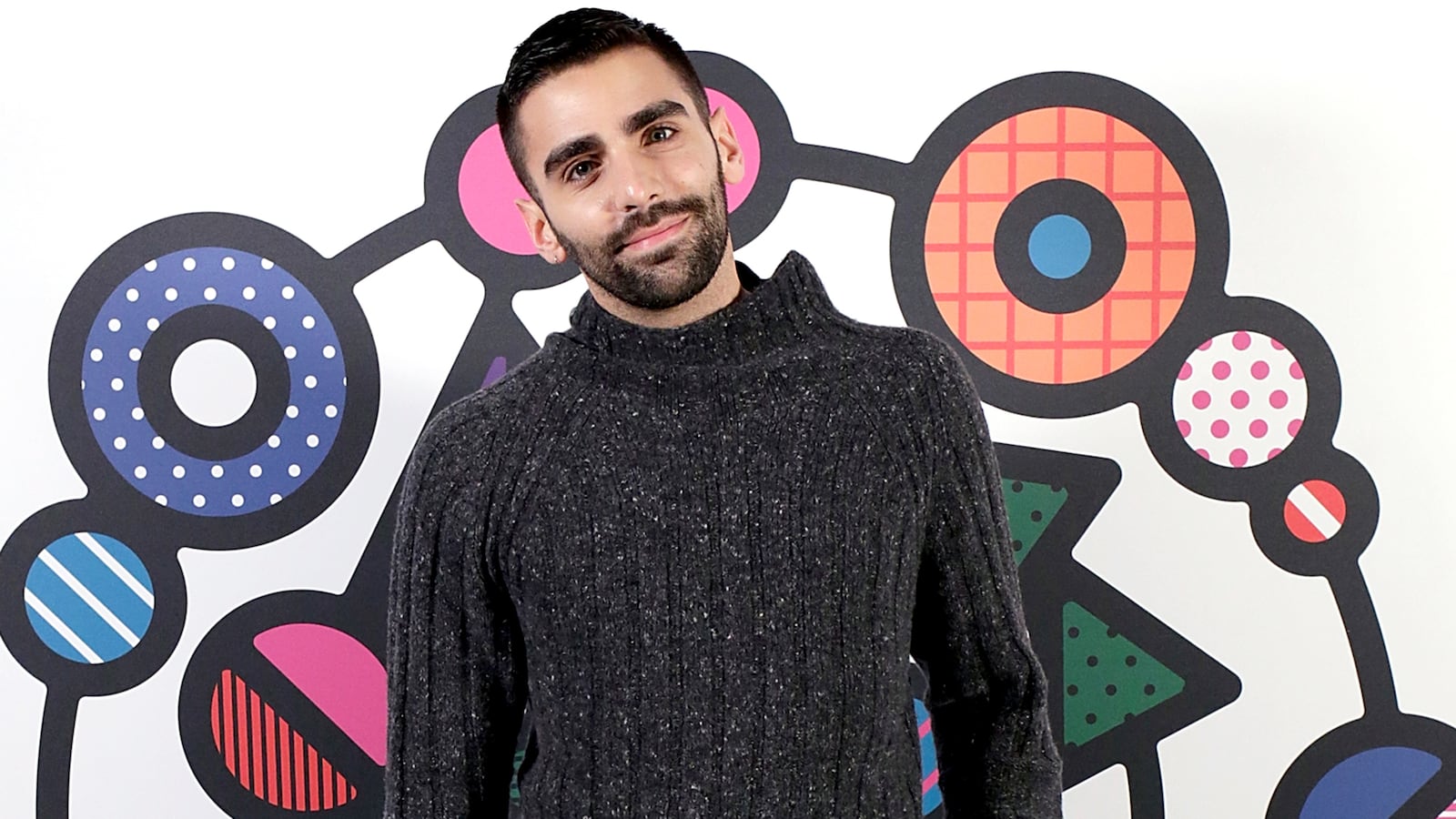In early January, Elaine Welteroth announced in an internal email sent to Teen Vogue employees that she would be stepping down from her post as editor-in-chief. Welteroth’s move came after November reports that Teen Vogue would no longer be publishing a print edition.
In a statement, Condé Nast cited Teen Vogue’s “tremendous audience growth across its digital, social and video platforms this year”, continuing, “As audiences continue to evolve around content consumption, we will modernize and calibrate how, where and when we produce and distribute our content to be in synch with the cultural moments and platforms most important to our audiences.”
Unlike Welteroth’s departure, which earned widespread coverage, the all but inevitable promotion of Phillip Picardi from digital editorial director of Teen Vogue to chief content officer flew more or less under the radar.
On January 17, Condé Nast issued a press release naming Picardi as CCO, the publication’s new most senior role. The release detailed that, in his “elevated” role, “Picardi will continue to oversee content for the brand’s digital, social and video platforms and will take on experiential endeavors, including the highly successful Teen Vogue Summit series.”
It also emphasized that Picardi will continue to act as the chief content officer of them, Condé Nast’s recently launched LGBTQ platform. Interestingly, the news doesn’t appear to have been published on Condé Nast or Teen Vogue’s official Twitter—and Teen Vogue tweets a lot.
While Welteroth, who was only the second African-American to serve as a Condé Nast editor-in-chief, marked her abdication with a lengthy Instagram post, Picardi was relatively modest about his career “elevation” on social media, retweeting one article about the appointment and quietly updating his Twitter and Instagram bios to “Chief Content Officer @THEM + @TeenVogue”.
It’s easy to imagine why Teen Vogue wouldn’t want its new leadership to make too many headlines. On the one hand, Picardi’s role as digital editorial director makes him the most natural, proven candidate for the CCO job—with Teen Vogue transformed into a purely digital platform, Picardi’s new job description is essentially a continuation of his old one.
Still, the official announcement of the Phillip Picardi era, inevitable as it may be, still puts Teen Vogue in a tricky position.
After all, appointing a man in the most senior role of a publication that seeks to empower young women and girls is the sort of (at best) optically-challenging and (at worst) backwards-facing move that Teen Vogue would typically write a scathing article about.
It is, at once, extremely pragmatic and yet an utterly bad look. As Jezebel’s Deputy Editor Julianne Escobedo Shepherd tweeted, “Old enough to remember when Teen Vogue wasn’t run by adult men.”
Of course, the counterargument to the undeniably bad optics is an easy one; it’s hard to imagine Condé Nast bringing in or promoting someone to essentially do what Picardi was already doing—and by all accounts, doing very successfully.
Picardi has been called everything from Teen Vogue’s “secret weapon” to “Condé Nast’s beloved digital wunderkind”. An April 2017 Condé Nast press release credited Picardi with “growing TeenVogue.com’s traffic nearly 250% in just two years”, continuing, “In the past year, traffic to TeenVogue.com has increased to more than 9.2 million unique visitors, up from 2.7 million unique visitors last year.”
However, it is worth noting that, according to Glossy, “Picardi will be tasked with regaining Teen Vogue’s momentum after a decline in digital readership.”
Their article on Picardi’s takeover continues, “After riding a traffic high in July 2017, during which comScore reported more than 9 million unique visitors, the digital publication has taken a readership hit in recent months. By October 2017, it had dipped to just under 5 million unique visitors, before rising slightly to 5.2 million in November 2017.”
Still, Picardi’s stated values and established brand are all perfectly in keeping with what Teen Vogue is and wants to be. In a 2016 interview, Picardi elaborated on his vision to Coveteur: “I really wanted Teen Vogue to be more of a presence on the news cycle and also I wanted to talk more about women’s rights, race relations, reproductive rights, and general health, sexuality, and identity politics.”
Later on, he added, “We’re making sure that people are represented, that we’re using the proper pronouns, that we’re creating content in a way that gives shine to young women.”
Picardi has received almost unanimously great press, and for good reason: he’s responsible for moving the now all-digital magazine forward, transforming it into the awards-receiving, Resistance-approved, altogether woke online platform it is today.
Anna Wintour, editor-in-chief of American Vogue and the artistic director of Condé Nast, called him a “fearless leader whose ability to inspire and lead cultural conversations of all kinds has connected deeply with Teen Vogue’s influential and growing young audience.”
Under his leadership, Teen Vogue published the Lauren Duca Donald Trump-gaslighting piece heard ‘round the world, one of the top performing Teen Vogue posts of all time. Picardi’s Teen Vogue takes on previously taboo topics like anal sex, and its news and politics section features articles on the school to prison pipeline, intersectional feminism, and government surveillance (and that’s just a selection from the past week or so).
In a recent Los Angeles Times article, Picardi emphasized that “It is our job in media, especially mine as a cis[gender] white man, to make sure we are creating environments in newsrooms that are representative of the people who are reading our content.”
It seems fair to wonder if Picardi—a man who has seemingly walked the walk of giving a platform to historically underrepresented groups, and hiring LGBTQ POC, and helping create the genuinely original them—has considered all of the implications of his new role.
If blaming Picardi for taking a promotion is a step too far, we can at the very least question Condé Nast’s decision to wade into the terrible optics of a male Teen Vogue takeover. Presumably, at some point in the process, a conversation was had over the importance (or not) of putting a woman in charge, and the possible ramifications of appointing Picardi.
Given Teen Vogue’s predominately female masthead—not to mention all of the talented and qualified media women outside of Condé Nast—it’s impossible to argue that a woman couldn’t be found to do the job. Ultimately, in a decision that’s both totally inevitable and deeply counter-intuitive, Picardi’s qualifications outweighed the awkwardness of his appointment.
According to a March 2017 Women’s Media Center report, men receive 62% of media bylines to women’s 38%, with only 77 percent of responding organizations reporting a woman among their top three editors.
By quietly installing a white man at its helm, Teen Vogue, a platform seeking to empower young intersectional feminists, has arguably taken a step backwards.
Unlike most top media positions, it’s a role that always has been, and logically would remain to be, the purview of women. Of course, Teen Vogue will continue to center these voices; but young readers who flip first to the letter from the editor—or, more accurately, scroll through tweets or click through verticals—will see a man in charge.






